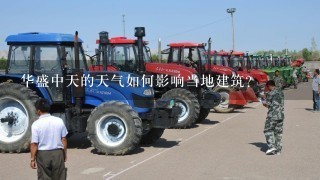华盛中天的天气如何影响当地建筑?

Sure, here's a summary of how weather affects buildings in Washington, D.C.:
Temperature:
- Average highs in the summer are around 75°F (24°C), with lows around 50°F (10°C).
- Average highs in the winter are around 40°F (4°C), with lows around 20°F (-6°C).
Humidity:
- High humidity can cause condensation on windows and doors, leading to mold and mildew growth.
- Low humidity can cause dry air, which can damage building materials and contribute to cracking and warping.
Precipitation:
- Washington, D.C. receives an average of 30 inches (76 cm) of rain per year.
- Snowfall is relatively rare, with an average of only 10 inches (25 cm) per year.
Wind:
- Average wind speeds are around 10 mph (16 km/h) during the summer and 5 mph (8 km/h) during the winter.
- Strong winds can cause damage to roofs and windows, and can also make it difficult to maintain outdoor construction.
Sunshine:
- The average annual sunshine hours are around 6 hours per day.
- This can be a significant factor in heating and cooling buildings, especially in the summer.
Overall, Washington, D.C.'s weather can have a significant impact on building materials and structures. High temperatures and humidity can cause condensation and damage to building materials, while low temperatures and dry air can contribute to cracking and warping. Heavy rainfall and snow can also cause damage to roofs and windows.
Here are some additional factors to consider:
- Construction materials: Different building materials are more or less susceptible to weather damage. For example, brick and concrete are generally more durable than wood and drywall.
- Age of the building: Older buildings may be more susceptible to weather damage than newer buildings.
- Location of the building: Buildings that are located in high-risk areas, such as floodplains or high-altitude areas, are more likely to be damaged by weather events.
It is important to take steps to protect buildings from the effects of weather, such as regular maintenance, proper ventilation, and using weather-resistant materials.


























































